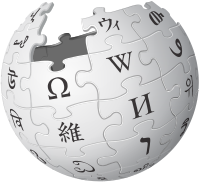
Photo from wikipedia
Neurofunctional models of developmental dyslexia (DD) point out disruption of the left-lateralized reading network. In individuals with DD, the left temporo-parietal (TP) regions are underactivated during reading tasks and a… Click to show full abstract
Neurofunctional models of developmental dyslexia (DD) point out disruption of the left-lateralized reading network. In individuals with DD, the left temporo-parietal (TP) regions are underactivated during reading tasks and a dysfunctional activation of the contralateral regions is reported. After a successful reading intervention, left TP lateralization was found to be increased in children with DD. Previous studies measured the effect of modulating the excitability of the left TP cortex using non-invasive brain stimulation (NIBS) in individuals with reading difficulties, showing significant reading improvements. NIBS exclusion criteria and safety guidelines may limit its application in settings without medical supervision and in younger populations. Neurofeedback (NF) training could be an alternative intervention method for modulating the inter-hemispheric balance of the temporal–parietal regions in DD. To date, the effect of NF on reading has been scarcely investigated. Few protocols increasing beta activity in underactivated areas showed improved reading outcomes. However, none of the previous studies designed the NF intervention based on a neurofunctional model of DD. We aim to propose a study protocol for testing the efficacy of a NF training specifically designed for inducing a functional hemispheric imbalance of the tempo-parietal regions in adults with DD. A randomized clinical trial aimed at comparing two experimental conditions is described: (a) Enhancing left beta/theta power ratio NF training in combination with reducing right beta/theta power ratio NF training and (b) sham NF training. Clinical Trial Registration: www.ClinicalTrials.gov, identifier [NCT04989088].
Journal Title: Frontiers in Psychology
Year Published: 2021
Link to full text (if available)
Share on Social Media: Sign Up to like & get
recommendations!